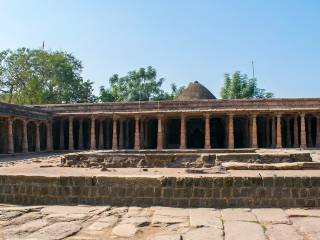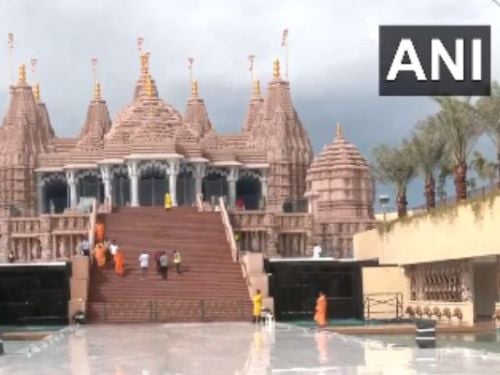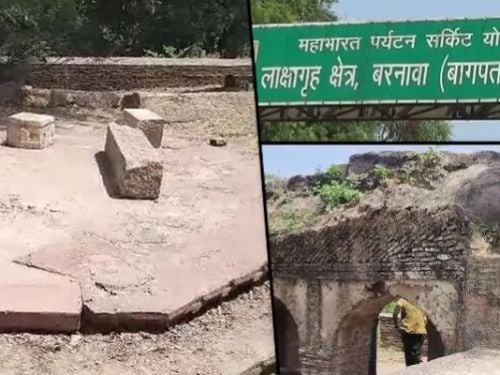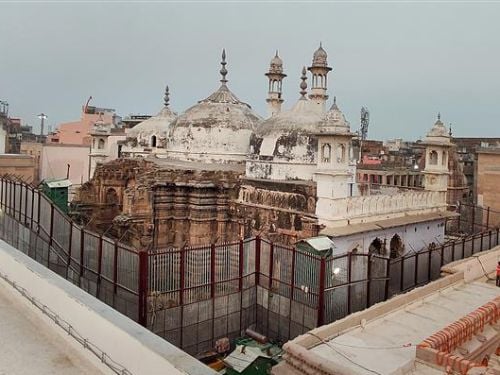Visakhapatnam, June 18: A marine archaeologist from Andhra Pradesh strongly believes that a temple, after which Visakhapatnam has been named, lies underwater less than 2 km off the coast of the port city, and has dedicated his life to locating the edifice.
Eswara Venkata Gangadharam, professor emeritus at Andhra University, is looking for financial support of around Rs 20 lakhs from the government to send down divers to locate the temple which he believes is 200 feet under the Bay of Bengal’s waters.
He cites a list of evidence to show that the temple had existed. "The temple is referred to in a stone plaque with Tamil inscriptions which still exists in the Visakha Museum," says the only scientist who has specialised in marine archaeology in the State. "The temple is also mentioned in a British Gazette in the 18th century," he says.
According to legend, a Chola king while on his way to Benares was so enamoured by the locale that he built a shore-temple devoted to the deity Visakha, the god of valour. The temple was named Vaisakeswara.
"The Shiva temple at the Naval Coastal Battery gives a strong and positive indication of a temple in the opposite vacant land which might have submerged into the seabed due to geological changes," Prof. Gangadharam says with conviction.
He also recorded old-timers who recalled their grandparents and great-grandparents talking about the temple located on the shore opposite the Naval Coastal Battery. It is at this place that people even today have sacred baths during the auspicious days of Karteeka Maasam and on Shivaratri.
The place was called Theerthapu Rallu in Kulottunga Cholapattinam, the earlier name of Visakhapatnam. The professor says he was inspired by the efforts of Prof. S.S. Rao who found the ancient town of Dwarka under the Arabian Sea off Gujarat.
The academic resigned an associate professorship in the geochemistry department at University of Malaya, Malaysia, in 1987. He worked with Prof. Rao to know more about marine archaeology during the mid-1980s when Dwarka was being excavated.
His efforts to locate the temple go back to 1987 when the Andhra University set up the Centre for Marine Archaeology. Scuba divers from the Indian Navy made two attempts in 1992 and 2003, scouring the seabed for four days each time to locate the temple.
"It at least takes two months for a team of divers to go into the sea regularly to scour one square kilometre. The equipment, too, was then insufficient… so was the money. It will take up to Rs 20 lakhs, which the government is not prepared to spend." the professor laments.

 Madhya Pradesh: ASI survey of Bhojshala complex in Dhar to start on March 22
Madhya Pradesh: ASI survey of Bhojshala complex in Dhar to start on March 22 PM Modi to inaugurate the first traditional Hindu Mandir in Abu Dhabi
PM Modi to inaugurate the first traditional Hindu Mandir in Abu Dhabi Tirupati Devasthanams to establish platform for non-Hindus to adopt Sanatan Dharma
Tirupati Devasthanams to establish platform for non-Hindus to adopt Sanatan Dharma Baghpat court gives ownership rights of Mahabharata era Lakshagriha to Hindu side
Baghpat court gives ownership rights of Mahabharata era Lakshagriha to Hindu side Misleading claims about Brahmins removed in rationalised NCERT textbooks
Misleading claims about Brahmins removed in rationalised NCERT textbooks Big victory to Hindus as court allows puja in Vyas Ji Ka Tehkhana at Gyanvapi complex
Big victory to Hindus as court allows puja in Vyas Ji Ka Tehkhana at Gyanvapi complex